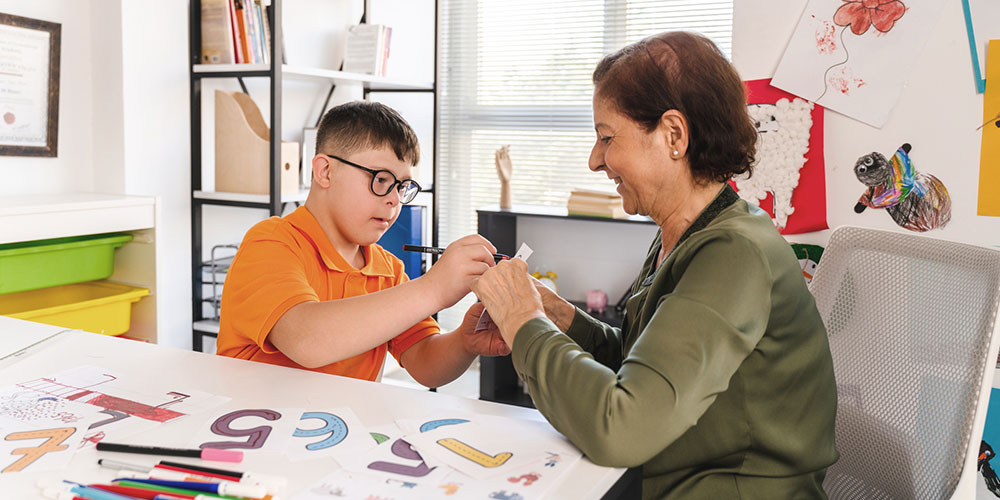We need to talk about special education teacher burnout.
More than that, we really need to talk about how to reverse what forces special education teachers to leave this undeniably crucial position. After all, the numbers paint a sobering portrait: 25% of special education teachers exit their post each year, a vastly higher turnover rate than their colleagues working in traditional classrooms.
It’s not enough to bring awareness to this issue — we need to do something about it. In this feature, we aim to identify the symptoms of special teacher burnout, discuss why the attrition happens in such a fast and sustained way, and point out the best way to course correct.
The Symptoms of Special Education Teacher Burnout
Pulling directly from the source, the following information comes from the special educators who we’ve interviewed or otherwise worked with on a professional development level.
At the risk of sounding like a late-night pharmaceutical advertisement, we need to understand what special education teacher burnout feels like. Specifically, we’d be wise to know the signs before the symptoms lead teachers to the breaking point.
If you’re a principal or administrator reading this, these are the warning signs that your special education teachers are overloaded. These predictors are a call to action. And if you’re a teacher experiencing these nagging feelings, we hope you know that there’s a way to mitigate, if not fully escape, the clutches of teacher burnout. Which looks like this:
- The agitation that occurs when you feel as if you’ve accomplished nothing at work. While no teacher is immune to a chaotic or unproductive day, ongoing occurrences wear down confidence and morale.
- The weight of tasks over which special educators have no control. This might include auxiliary paperwork, sudden IEP meetings, or unforeseen behavioral issues in the classroom.
- General physical reactions to stress, such as fatigue, body aches, and the inability to fall and stay asleep.
- The unpredictability of the special education classroom. This leads to misguided feelings regarding inadequacy and imposter syndrome, which often results in dwindling motivation and increasing detachment.
So, what leads teachers to experience these feelings?
Special Education Teacher Burnout: Examining the Causes
Let’s face facts. Teachers accept a lot when they take the gig. We’ve never spoken with one educator who wasn’t privy to the lack of six-figure pay. Not a single teacher we know was ever unaware of the inherent challenge of working with young people and families. The long hours, the dearth of appreciation, the erratic nature of student behavior — all of that is common knowledge for those entering the profession.
But these four causes of special educator burnout might not be on everyone’s radar.
Lack of Commensurate Support
The needs of special education teachers and their students are ever-evolving. However, current classroom management and learning solutions often offer only boilerplate methods that fail to coincide with individual needs. For example, autism happens on a wide spectrum, and though this is common knowledge in academic circles, the resources available often treat it as a monolithic condition.
Low Access to Quality Technology
Technology exists to accommodate students of varying abilities and limitations. And yet, teachers in working-class zip codes rarely get access to tools that can streamline their jobs to provide an education for every child, no matter what setbacks those children experience.
Unchecked Student Behaviors
Special education students are by no means the only arbiters of disruption. However, certain conditions lead to more intense and unpredictable behaviors. Not even the most seasoned special educator is equipped to handle every classroom kerfuffle that happens during the course of the day. These situations require ongoing support that teachers are often not receiving.
Little to No IEP Training
This challenge does not necessarily speak to special educators themselves. If any faculty member has adequate IEP training, it’s them. But does the rest of the school building have a working knowledge of what is required with individual education programs? When this training happens in a ubiquitous manner, special education students and teachers benefit.
How Can We Reverse These Trends?
So, what are we going to do about all this?
Invest in Professional Development
We have a theory at Advancement Courses HQ. We very sincerely believe there’s one thread that connects all teachers. And that shared emotional DNA is a commitment to lifelong learning. What are teachers if not professional, lifelong students? That said, ongoing professional development is more vital than ever for teachers at the helm of special education classrooms.
With the latest training and support, special educators can access technology that streamlines learning for those who process information in a different way. In that same vein, subject matter experts from across the country are available to share insight on the latest classroom management techniques that ensure a safe and inclusive environment where everyone gets the chance to learn.
Ensure Principal and Administrative Support
Support from the top is important to just about every teacher, but administrative backing counts for double in the realm of special education. While no ironclad blueprint exists, it’s clear that principals who facilitate fluid communication between the main office, the classroom, and special education students’ homes create a less turbulent environment where growth and empathy can flourish.
To that end, top-down support includes a working knowledge about students who have learning differences. This means becoming familiar with inclusive classrooms, available services, and disability laws. All of these become tools that principals can provide their special education faculty so that they can commit to lifelong learning and continuous progress.
We’d be remiss not to mention the principal’s role in curbing disruptive behavior. Because children with learning differences are sometimes prone to more severe disciplinary infractions and often have more rigorous emotional needs, teachers need on-call support to mitigate disruptions and maintain a working learning environment.
Commit to Thoughtful Role Design
As a study from Vanderbilt University points out, special education teaching has become a set of fragmented, if not chaotic responsibilities. As if the heavy responsibility of classroom management didn’t bear enough weight, the added tower of paperwork can overwhelm even the most diligent teacher. Of course, overload equals burnout, and as special educators require more energy to facilitate learning, we must design these jobs without extra layers of stress.
Is it possible to eliminate the clerical duties altogether? No. With tests to measure learning differences, IEP meetings, reports, and communicating with families, these teachers remain well aware of what’s expected of them. That’s why it’s essential to provide technology that allows for streamlined work and backing from administrators who help make excessive responsibilities more manageable.








